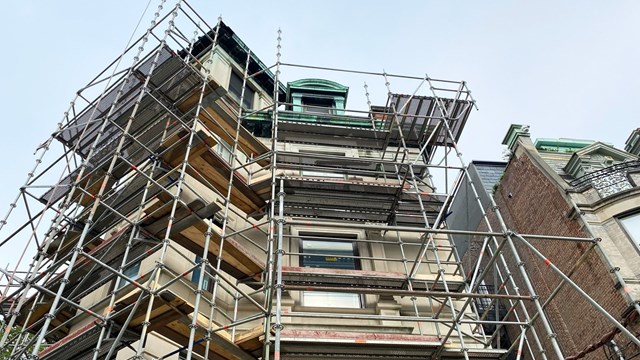In the beginning… there were rodents. Humans throughout the world have co-existed with rats, mice, and their relatives since the dawn of recorded time–sometimes peacefully and even reverently, as in the cases of China and parts of India, and sometimes with loathing and hatred, as in the cases of Medieval Europe and modern urban areas like New York City.
Urban rodents eat garbage, carry diseases, and harbor other pests like fleas and microbes. Their droppings are often loaded with infectious diseases like salmonella and leptospirosis (also called Weil’s disease), and when rodents are plentiful, their shed fur and dander can contribute to asthma and other respiratory ailments. Moreover, rodents are seen as bringers of filth and dirt–a house infested with rats or mice is like a body infected with cancer.
Gnawing on the Big Apple
Although several species of rodents make their home in the Northeast, two species in particular have settled in metropolitan New York City: the Norway rat (rattus norvegeicus) and the house mouse (mus musculus domesticus). For the most part, Norway rats and house mice–along with their human hosts–emigrated from Europe over two centuries ago. The boats that carried newcomers seeking freedom and prosperity also carried thousands of furry stowaways seeking nothing more than a plentiful food supply and lots of room to breed.
While their unwitting human chauffeurs struggled to establish homes and livelihoods in the New World, the newly arrived rodents enjoyed a new habitat replete with food and short on natural predators. With few predators to keep their population in check, post-Colonial rodents multiplied furiously. The factors upon which rodent population growth depends–food, water, shelter and lack of disease–are the same environmental conditions human beings need in order to thrive. As the human population in America proliferated, so did the varmints.
With the Industrial Revolution came urban sprawl, and with sprawl came more rats and mice. By the beginning of the last century, rodents outnumbered humans in New York City, and today, their only fully functioning predator is the New York State-Certified Pest Control Operator (PCO).
"…With my panic subsiding, I figured, ‘nothing ventured, nothing gained’ and kept shining my light around the basement. I began to notice the personalities of the rats. They’d shy away from the light as it hit them, moving further back into their holes in the walls as the light reached them. When I moved the light away, they moved back out toward me..."
Clearly, to have survived for months on damp, rocking ships crossing the Atlantic and then to have made a go of it in alien territory, Norway rats and house mice are hearty, adaptable creatures. They’re agile, resourceful, and strong for their size. Rats have been observed treading water for nearly 36 hours at a stretch, and mice can wriggle through holes one-quarter inch in diameter. Both rats and mice can survive temperatures ranging from 32 to 130 degrees Fahrenheit–house mice often make their homes in the insulation surrounding heating units in kitchen stoves. The little creatures can even adjust the thickness of their fur to compensate for the higher temperatures inside the oven.
In addition to their formidable instinct for adaptation and survival, rodent pests are also prolific breeders. Norway rats average six or seven young in a litter and can produce three to 12 litters in a single year. House mice average about six babies per litter and produce around seven litters per year. Rodent breeding knows no season, and it’s estimated that two rodents left unchecked can produce 760 offspring in one year alone.
Given those numbers, it’s safe to say that if you spot a rat or mouse in your building–even on a balmy summer night–you’re infested. Once the diagnosis is made, or even suspected, it’s time to call in the infantry.
Control vs. Elimination
"…I figured, by the size of the basement, that it would take me about two or three weeks to rid the building of rats if I visited three times a week. I’d bait the basement on one day, return in two days to remove the dead rats, re-bait, and then return in another two days. I remember bringing out large plastic garbage bags full of dead rats–15 or 20 at a time. I was amazed."
Before a professional exterminator begins work in your building, it’s important that residents and board members understand the difference between pest control and pest elimination. Control is the first method of service a PCO considers when faced with a rodent infestation situation he or she deems incurable. Like a patient with diabetes or some other chronic illness, a building with an incurable rodent problem need not give up hope entirely–there are ways to control the condition that, while not eliminating it outright, will at least afford the sufferer some relief and bring the problem to manageable levels. Rodent control generally involves regular maintenance visits from a PCO to apply rodenticide in areas known to harbor mice or rats. The idea is to limit the number of new rats and mice breeding or moving into the building, given that it may be impossible to rid the structure of rodents entirely.
By contrast, the second method of service a PCO may consider is rodent elimination. This approach is applied when the PCO deems the infestation to be curable. An elimination approach considers measures and techniques that lead directly to total population eradication of the rodents within a building.
When your building is playing host to several generations of four-legged menace, it’s to everyone’s benefit to choose a pest control company that offers inspection/consultations to assess the severity of the problem and then recommends the most realistic course of action. Some companies offer both pest control and elimination, while others focus strictly on one or the other. Regardless of individual approach, any company attempting to deal decisively with a pest problem must position itself as predator to the rodent prey, or risk merely pacifying the conditions that allow a rodent problem to exist in the first place. This is small game hunting.
The Hunt is On
Once called to the scene, your building’s chosen PCO will perform an inspection with a view to rodent prevention. The inspection will first identify harborages and/or breeding places and assess the level of infestation. The PCO will then rodent-proof the building, sealing or blocking any suspect gaps or openings in walls, eliminating tempting hiding places, and remedying any unsanitary conditions that might be food or shelter sources for vermin. (A full inspection by a PCO is a good idea, even if your building doesn’t currently have a rodent problem and you’d just like to keep things that way.)
A typical inspection begins with identification of rodent harborages. Harborages offer rodents a sense of protection. In these safe spaces, rats and mice are free to mate and raise their offspring undisturbed, with a minimal amount of danger. Common harborages include rubbish heaps, parks across the street from residential buildings, or construction sites with lots of building materials lying around.
After the pests’ hiding and breeding places are identified, any opening in a structure that might admit rats or mice is "rodent-proofed" to prevent the rodents from entering the building. Rodent-proofing is often a matter of simple maintenance or repair, but can sometimes involve engaging an outside contractor to close any major entry points into a building and to prevent rodents from maintaining harborage nearby.
Rodent-proofing also means denying rodents access to food sources. A dirty or cluttered building is like a body with a depressed immune system–it’s just waiting for disease to strike. Aside from the obvious precautions, like disposing of garbage properly and using heavy lids on trash cans, measures like routine steam cleaning and vacuuming of compactors, garbage chutes, and storage rooms will help eliminate the conditions that make a building attractive to rodents. The regular removal of garbage and clutter also helps by removing hiding places and forcing rodents out into the open–something they are loath to do.
Winning the Battle… and the War
"…Three weeks went by, then a fourth week, and a fifth. At about the sixth week of bringing out bags of dead rats from the basement, it dawned on me that I couldn’t be killing just the rats in this building–the building wasn’t large enough. After analyzing the situation, I made another inspection of the building and surrounding area. I found holes in the basement leading outside, and I finally figured out what was happening. There were rats already living in the building, but when the other surrounding buildings were demolished, THOSE rats moved in, and the original rats were forced into the upper floors of the building. The pattern continued until I entered the basement. I was killing every rat in the neighborhood."
Rodents aren’t going anywhere. As long as there are large concentrations of people living, working, and producing garbage and cozy places for them to live and breed, rats and mice will be with us. While we may respect their adaptability and marvel at their ability to stymie our every effort to eradicate them, the bottom line is that a pest is a pest, and some pests are nastier than others. If your building is plagued with gnawing, nibbling, scurrying nuisances, the time has come to engage a professional and take back your territory.
Mr. Ayesu is president of Kojo’s Pest Elimination and Pest Control in The Bronx.







Leave a Comment